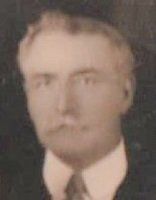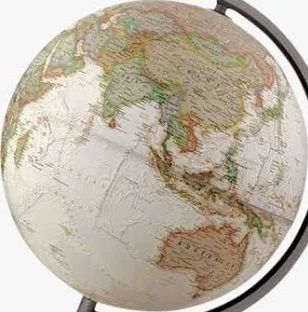

Andrew Barr
Chicago


Robert Smith
Football came to Illinois from about 1887 in two stages, through basically two industries, metal and coal, and three men in three locations. First were the towns that grew up in the near countryside to the south and west of of Chicago and are now suburbs. And then more or less simultaneously it was in the city of Chicago itself and up-State. And it came in its initial iteration in head and feet of a Scots Scot, then in the second in those of an English- and and Diasporan Irish-Scot respectively.
The first iteration was in 1890 and 1891. That was the year that saw the arrival to the city's South Side with its then meat-packing plants and steel-works of the Barrs. They, the three of them, Andrew first, then Margaret and daughter, Mary Kerr Barr, all came from Ayrshire, indeed from Kilwinning, where Margaret had been born with Andrew's birth in December 1865 in Dalry, the son of William Barr and Mary Kerr. In fact the couple would in December 1892 be married not in Scotland but in the New World.
It meant Andrew Barr, a labourer in the Auld Country, was already aged twenty-four as he began his new working-life on the other side of the Atlantic in a foundry. And as such he would not only bring with him the contagion of Scottish football but a player of some experience, who almost immediately would join one of the most successful of local clubs, the Thistles. The standard was high. With it in the first season he would be alongside Henry Boyd, born in North Lanarkshire, fresh from Sunderland Albion and who would return to Britain to play for Burnley, West Bromwich, Third Lanark, Arsenal and Newton Heath, the proto-Manchester United.
Barr would stay with Thistles for four seasons and in that time he showed himself to be one of the best defenders in Illinois's booming, largest conurbation. In 1893 in his new hometown he would anchor a "Scots National Team's" win of the Columbian Exposition World Football Tournament. But he would also travel with his club on tours to St. Louis and Fall River and as a guest with the Chicago Cricket Club to Toronto and Detroit, being recognised then by election as one of the first officers of the city's Scottish Athletic Club.
Perhaps as Barr's playing time came to an end the family would move from South Side to Batavia, a then semi-rural town forty-miles to the west, there working now as a foundry foreman. By 1900 he and Mary had five children, four American-born. By 1910 and still there there were seven. In 1920, with him still working as a founder, they were living in Iowa with two more weans, they would have twelve in all, but by 1930 the decision had been taken to return to Aurora, seven miles south of Batavia. There before retirement he would as a School Superintendent, the Jannie, and on retirement itself would live locally for another twenty years. Mary Barr would die in 1955 in Aurora itself, Andrew just months later in nearby Genoa to be buried in East Batavia's Cemetery.
The second iteration was, as in other parts of the United States and after a short gap, in the fifteen years to the Great War and for the purpose of Chicago came in the form of Ben Govier and Bill Tallman. Govier arrived in America in 1891. He was fifteen, born in 1876. And he came with his English-born parents, his father a steelworker, as Ben had been briefly before departure. But he had been born not in England but in Coatbridge, his father having come north for work. And it was in North Lanarkshire that he had learned to play the game the Scottish way before carrying it with him. By 1910 he was he was a joiner living in Chicago with three of the eventually four children he would have with his also Scots-born wife, Constance. Although her father had been Belgian and her mother Irish.
On arrival in Chicago Ben Govier was straight to work. He found it at the Pullman Car Company, the maker of the train carriages that still carry its name. He need to. His father would die after just eleven weeks in the New World, leaving his widow and four bairns, of whom he was the eldest. Pullman had a large workforce with a good number of Scots amongst them yet such was Govier's prowess he was by 1895 and nineteen a starter. Indeed, over the next couple of years he would turn out for his works team, for Thistles, quite possibly filling Andrew Barr's slot as he moved on, and in St. Louis. But in 1897 he returned to the coach manufacturer and was a stalwart of the team for the next two decades so into his forties. Indeed he would, having become a seemingly self-employed joiner, remain in the Windy City for the rest of his life, dying there in 1951 and buried in its Mount Greenwood Cemetery.
And finally there is William Tallman, son of William and Jeane nee Cardwell, he born in Glasserton in Wigtonshire but of Irish, indeed County Down, Talman parents and moving as a child to Dalmellington, Ayrshire, and she in Dalrymple, also in Ayrshire. In the Auld Country William Tallman Snr had been a coal miner. And it was exactly as such that in 1871 he arrived in Braidwood, sixty miles south-west of Chicago. It was a bit of a Scots-toun with a dash of Irish. Amongst others Jeane was already there, having arrived in about 1870 so a young teenager, the daughter of another County Down-born miner.
William Snr. and Jeane were married in Braidwood in 1877. They would have twelve children, ten of whom would survive infancy. It is they and eight of the weans that are pictured above. William Jnr., the one on the right, was the fourth of them to survive, born in 1884, himself becoming a miner on leaving school but carrying on in a sea of alternatives and at a distance of almost four thousand miles the Scots tradition of the round-ball game. Most of the eight boys in the family could play a bit. And it was as a miner as the Braidwood mines were worked out that William Tallman Jnr. would continue to work in nearby Felix and Carbonhill. He would marry in Felix in 1911, to Rose Ward, of a Scots father and an English mother. Two sons were soon born but by that time Tallman had already long been a member of the notable Coal City team, Coal City being between south of Carbonhill. He would play for the club from 1903 to 1915 with fixtures also taking him to Chicago itself and once more to St. Louis. it seems likely that not Barr's but his and Gouvier's paths would have crossed
However as the football came to an end it seems the family was on the move. In 1920 they were living in Joliet, twelve miles nearer to the metropolis, he with a new trade, that of carpenter. And, although it he would die in Colorado seemingly immediately following his brother's passing there, it was in Joliet that he had remained for the remainder of his life. He was there in 1940 and 1960. Rose, who would survive him by fourteen years, would be buried there in 1976 alongside him in the Elmhurst Cemetery after his own passing at the age of seventy-seven in 1962.
And behind all those who would come later is one Scot, who we know was a footballer of note, a Scottish international, indeed, but one for whom there is no evidence that he played the game at any time across the pond, be it in his first point of stay, Wyoming, that of his death, the city of Chicago itself and anywhere in between. His name was Robert Smith. He was, as I write within two weeks of the 150th anniversary of the first official football international ever, the meeting of Scotland and England in Glasgow in 1872, a member of that pioneering team. By then he, an Aberdonian, was actually living London playing a key role in the all-important connection between the Football Association in London through his club there, South Norwood, and his Scottish club, Queen's Park, of course. And it was from there in 1873 he left for the States to work as a cashier in the coal-mining camp of Almy, Wyoming. From there he briefly dabbled in silver mining across the state-line in Utah before settling in back in Wyoming in Green River, opening a store.
Robert Smith is known to have returned once to Scotland. In 1879 he married Georgina Kidd in Glasgow, taking his bride back to the Cowboy State, where in 1887 they move to nearby Rock Springs, he owning and running the local paper. And it was there that Smith entered politics, serving from 1888 on the Wyoming Territorial Council before it became a State in 1900. In 1902 he even became Chief Clerk to the new Wyoming House of Representatives. This was before a year later he took himself to Oklahoma until in 1914 he fell ill, travelled to Chicago for treatment, dying there at the age of just sixty-six. There he is buried at the Graceland Cemetery, another Scot without real recognition be it from his countrymen, or England and States for what crucially he had done for our game of football, theirs, the World's and for America's booming "soccer".
